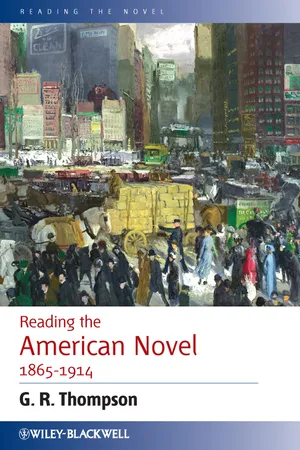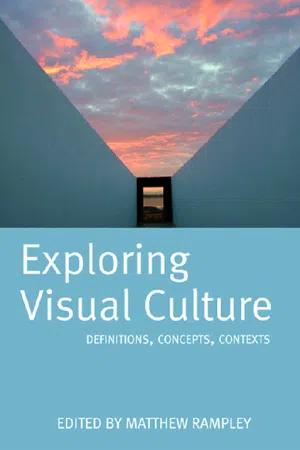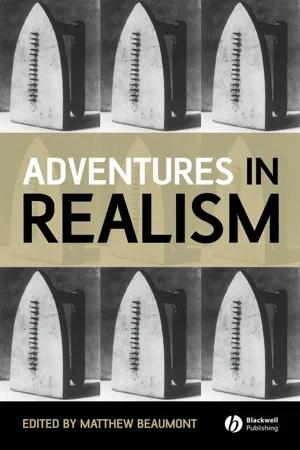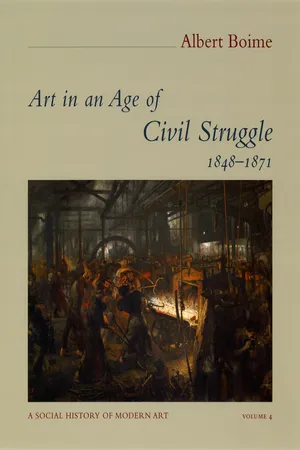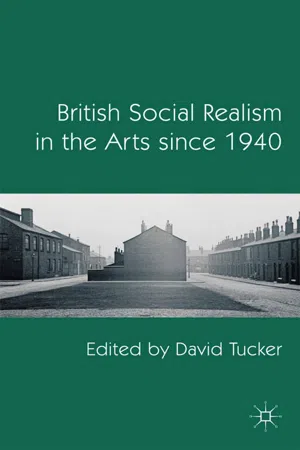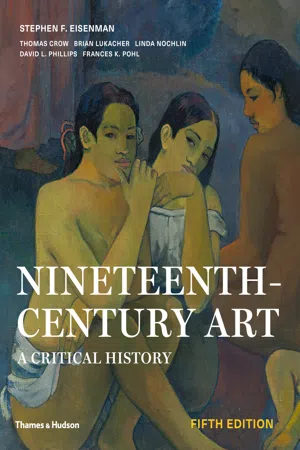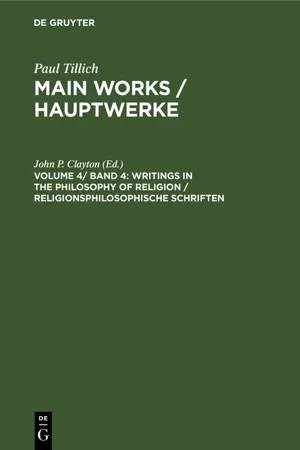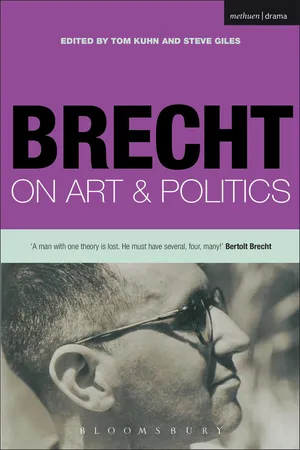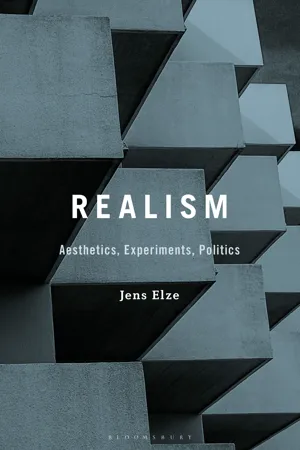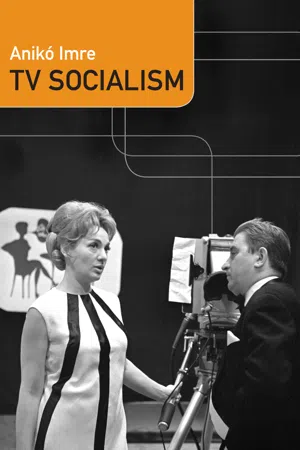History
Social Realism
Social Realism is an artistic movement that emerged in the 19th century, aiming to depict the harsh realities of everyday life, particularly focusing on the working class and social issues. It often portrayed scenes of poverty, oppression, and injustice, serving as a form of social critique. Artists sought to bring attention to societal problems and advocate for change through their work.
Written by Perlego with AI-assistance
Related key terms
1 of 5
10 Key excerpts on "Social Realism"
- eBook - ePub
- G. R. Thompson(Author)
- 2011(Publication Date)
- Wiley-Blackwell(Publisher)
Chapter 2 Of Realism and Reality Definitions and ContextsAs a literary term, realism normally refers to a theory and practice of fiction in which the artistic goal is to portray “life as it is” – rather than intensified or as it should be – and in simple direct language rather than striving for striking metaphors and indulging in rhetorical flourishes. The elevated subject matter of classic tragedy, or the poetic elements of optative romanticism, or the sentimental aspects of domestic novels and romances, or the hair-raising events of gothic romances were to be downplayed or avoided in favor of the everyday, average, prosaic aspects of life.Realism in this sense was especially prominent in France, England, the United States, and Russia from about the mid-nineteenth century to the 1930s and 1940s (and beyond). But there are realistic, mimetic elements in works written centuries before: in the Iliad and the Odyssey (c. eighth century bc), in the plays of Sophocles (496–406 BC), in Boccaccio's Decameron tales (1351–1353) and Chaucer's Canterbury Tales (c. 1387–1400), in the plays of Shakespeare (1564–1616) and other Renaissance dramatists. Don Quixote (Part I, 1605; Part II, 1615) presents a hybrid form of a romance and novel in which the interplay of worldviews is centrally informed by the mixture of realism with idealized romanticism. Many consider this seventeenth-century work the cornerstone of the modern novel.In the English-speaking world, literary historians generally point to the principal eighteenth-century British novelists as anticipating the nineteenth century in the development of modern realism. In American literature, the primary meaning of realism indicates a period: the historical era from about a decade after the American Civil War to a decade or two after World War I.1 But literary realism, even when confined to a historical period, is not a single undiversified idea or theoretical program or movement. In both Britain and America, major fictional forms partaking of both realism and romance included the domestic novel , the novel of manners , and the sentimental novel . In America there was an important, predominantly realist, movement toward regionalism , within which broad rubric a form called local color is sometimes distinguished. Both centrally involve a forceful vernacular style (idiomatic spoken language), often in dialect (regional or ethnic idiom). In addition, we can identify, at the minimum, several forms of realist theory and practice in Europe and America: objective realism , compassionate realism , benevolent realism , and sentimental realism . There is also a distinction to be made between intense “social reformist” realism and “quiet” realism. Variations on realism and anti-romance are also in tension with, or in complementary relation to, impressionism and expressionism and most especially naturalism .2 - eBook - PDF
Exploring Visual Culture
Definitions, Concepts, Contexts
- Matthew Rampley(Author)
- 2019(Publication Date)
- Edinburgh University Press(Publisher)
8. Representation and the Idea of Realism Neil Mulholland Introduction First follow Nature, and your judgement frame By her just standard, which is still the same. Alexander Pope, An Essay on Criticism (1711) ‘Realism’ is one of the most commonly used cultural terms and exercises a partic-ularly powerful hold over the ways that people judge and exploit visual culture. Today, it is very often used encouragingly as a way of praising a particular work of art, photograph, television programme or film. To most people, its meaning is common sense and uncomplicated. For some, ‘realism’ conjures up connotations of truth, straightforwardness, sincerity and honesty. For others ‘realism’ takes its cues from the present; it is based upon everyday experience rather than myth. ‘Realism’ may be characterised by its gritty social or political message, an interest in ‘ugliness’ or contemporary urban living. Such readings of the term ‘realism’ might originate in the literary and artistic movement correlated with the revolu-tionary events of 1848, which was associated with French radicals such as the socialist painter Gustave Courbet, the republican caricaturist Honoré Daumier or writers such as Emile Zola and Charles Baudelaire. 1 As an artistic movement, Realism was tied closely to the steady growth of faith in modern political and natural sciences, to the belief that the world could be observed objectively and factually. Gustave Courbet painted The Stonebreakers in 1851 (Figure 8.1) from direct observation of the rural labouring classes, while Emile Zola’s novel L’Assommoir (1876) was based on facts and figures relating to the poverty and squalor suffered by people living in the slums of Paris. Writers and artists such as Zola and Courbet used their empirical observations to make barbed political commentary on contemporary society. - eBook - PDF
- Matthew Beaumont(Author)
- 2008(Publication Date)
- Wiley-Blackwell(Publisher)
Eds. Briony Fer, Paul Wood, and David Batchelor. London: Open University/ Yale University, 311–31. Chapter 8 Socialist Realism: “To depict reality in its revolutionary development” Brandon Taylor Socialist Realism presents paradoxes for anyone interested in Western art and literature. Though never a style, or a school, or a movement, as a creative method it remains largely unknown in Western Europe for the simple reason that only a few of its novels have been translated, distributed, and read, and because very few of its better paintings, sculptures, graphic works, and films have been seen in Western museums and cinemas. The formal collapse of the Soviet Union in 1991 has had the effect, after a fairly brief explosion of interest, of dampening intellectual curiosity about its ideas and principles. In addition, the aesthetic principles that drove Socialist Realism not only in Soviet Russia but in other Eastern bloc coun-tries up until the end of the cold war remain unexplored and hence largely misunderstood. The epithet “Socialist Realism” appeared in print only gradually, first in the literature journal Literaturnaya gazeta (Literary Gazette) and then in the visual arts journals Za proletarskaya isskustvo (For Proletarian Art) and Brigada khukdozhnikov (Brigade of Artists) in 1932. It was not until an alleged meeting between Stalin and Soviet writers including Maxim Gorky in the fall of that year that its broad principles were formulated. And it took further debate in the art and literature journals before the term was defined in contrast to the principles of Western modernism and most world literature, at the first All-Union Congress of Soviet Writers in August 1934. In hindsight it is remarkable that Socialist Realism first emerged as a method applicable to the literary arts. This priority can be - eBook - PDF
- Albert Boime(Author)
- 2008(Publication Date)
- University of Chicago Press(Publisher)
163 radical realism continued general concern for Courbet’s rejection of idealized forms and content and his seeming preference for the sordid aspects of human behavior and social existence. At the core of this new construction aimed at displacing classic, romantic, religious, and metaphysical interpretations of nature and soci-ety was a novel concept of time, an experience in real time opposed to the “timelessness” of classical beauty and spiritual perfection. The old dualism of the timeless and the temporal realms was replaced by the monistic emphasis on an imperfect time-ridden human dimension. Classicists and romantics celebrated the epic and episodic moment, even when their work was based on actuality: David’s Oath of the Tennis Court , Goya’s Third of May , Géricault’s Raft of the Medusa , and Delacroix’s Liberty Leading the People are all stage-managed to elevate reality to the level of epic consciousness. The moment chosen is a heroic moment demanding an undivided state of heightened adoration and thralldom, the suspension of critical thought. Similarly, notions of the Beautiful and Divine Perfec-tion presupposed the negation of the consciousness of change and contra-diction in pointing to an exalted state. Realism’s focus on the empirical world, however, revised the aims of high art to align it with the scientific and positivist method, providing a sense of concrete time that flattened out climactic historical representation and, by extension, history painting. It was the uninflected present that preoccupied the realists, and in the hands of the radicals realism’s embrace extended to the squalor of life, the social contradictions, and the alienation of labor analogous to Marx’s analysis of modern capitalism. - D. Tucker(Author)
- 2011(Publication Date)
- Palgrave Macmillan(Publisher)
Social Realism and Visual Art 155 Studio International in 1976 provided a snapshot of some of the socially and politically engaged work going on in Britain at the time. 47 Steve Willats wrote about ‘Art Work as a Social Model’, a theme he pursued through the 1970s as he explored the realities of living in high-rise urban housing through text, photography and diagrams. Walker doc- umented the important Artists Placement Group, the project set up by John and Barbara Latham, Jeffrey Shaw and Barry Flanagan a decade ear- lier, which created artists’ residencies in industrial settings: placements included John Latham with the National Coal Board as well as in the Intensive Care Unit of Clare Hall Hospital, Stuart Brisley at Hillie Co Ltd, Leonard Hessing working with ICI Fibres Ltd, and Lois Price with the Milton Keynes Development Corporation. 48 In the same issue, Victor Burgin, typically crossing the boundaries of theory and practice, contributed a theoretical critique on ‘Socialist For- malism’ and a two page photo-essay warning against the illusions of capital, urging As we move into this characteristic contemporary world, we can see the supposed new phenomenon of classlessness as simply a failure of consciousness. Class consciousness Think about it (Burgin 1976, pp. 146–7) Later that year, Burgin reprinted his now well-known poster, Possession, originally produced in connection with an exhibition in Edinburgh, and flyposted 500 copies of it across Newcastle upon Tyne. Created to look like an advertisement, it aimed to engage the public in a political dialogue about consumption under capitalism. All these activities and practices exemplified art’s purposeful engage- ment with social and political contexts but, in particular, specific photographic practices in the 1970s and 80s offer a richer resource for considering a social realist aesthetic.- eBook - PDF
Nineteenth-Century Art
A Critical History
- Stephen F Eisenman(Author)
- 2020(Publication Date)
- Thames and Hudson Ltd(Publisher)
10.20 Antoine Wiertz Two Young Girls or The Beautiful Rosine , 1847. Oil on canvas, 55⅛ × 39⅜ (140 × 100) 260 Chapter 11 INTRODUCTION The story of Realism is one of the most perplexing for students of nineteenth-century art. Within the domain of culture, we usually take the word “realism” (lowercase) to mean a work of art or literature that represents reality in a faithful way. If a picture bears a close resemblance to some person or thing in the world, or a novel conjures up a plausible likeness, we might say it is “realistic.” But in the context of nineteenth-century art, Realism is something else entirely. Around the time of the revolutions of 1848, workers and the lower middle class in the major European and American cities began to demand and expect a culture that spoke to them in a language they could understand. Forced by enclo-sure laws, higher rents, impoverished soils, and poor crop yields to leave the countryside to find work in urban facto-ries, construction trades, retail or domestic service, they sought a culture that affirmed them and inspired them in their struggles for economic security and political power. If a picture on view at the Paris Salon or the Royal Academy in London had an obscure Classical, religious, or mythological subject, they would greet it with disdain. If it was painted in a style that suggested a refinement or elitism foreign to them, they would reject that too. What they wanted was an art that was popular in content, legible in form, and famil-iar in style. And sure enough, such an art quickly arose: Realism. Its chief apostle in France was Gustave Courbet, and in England the group of young artists who called them-selves the Pre-Raphaelite Brotherhood, or PRB (the term “Realism” was not generally used in Great Britain, but the artistic culture there, between about 1847 and 1855, was nevertheless similar to that in France). - John P. Clayton(Author)
- 2020(Publication Date)
- De Gruyter(Publisher)
The official representatives of sciences and religion have not even noticed how far advanced this undermining process has gone, and not only in the proletariat. These people will face the coming catastrophe of their intellec-tual world as unprepared as they faced the catastrophe of their political world after the first World War. It is pathetic and provoking to see the naïveté with which many 350 Realism and Faith (1948) 75-76 highly educated people absolutize their own favored position in society, without realizing the general structure which gives them this position. Although it is the duty of scientific honesty to reject any propagandists abuse of the search for truth, it is also a duty of honesty to know the power of the social structure to which one belongs, for one cannot escape it. It determines one's cognitive functions as much as the system of values in which one lives. He who wants to know the power of reality in the depth of his historical existence must be in actual contact with the concrete, unrepeatable tensions of the present. The ideal of knowledge in historical realism is the union of scientific objectivity with a passionate understanding and transformation of the historical situation. Historical realism repudiates any attempt to escape the present for the sake of an unreal past or an unreal future. Romanticism which turns toward the past (a past that never did exist) and utopianism which turns toward the future (a future that never will exist) are equally wrong from the point of view of historical realism. Both lose the present and do not reach the really real in the historical existence, for the past can be reached only on the basis of an active participation in the present, and the future can be molded only in concrete decisions about actual historical problems.- eBook - PDF
- Bertolt Brecht(Author)
- 2015(Publication Date)
- Methuen Drama(Publisher)
Being advised to 'Stick to Balzac' is like being advised to 'Stick to the sea'! As long as we do not have a scientifically based definition of realism^ it may be better, i.e., more practical, i.e., more encouraging for realist writing, to speak of realists and their method of influencing reality by means of accurate reproductions of reality. 217 BRECHT ON ART AND POLITICS We will then be concerned not so much to restrict the number and types of these methods as, rather, to expand them. In that way we will encourage invention instead of discouraging it. We will put a price on truth, and allow any elbow room that's needed in order to attain it. In short, we will act as realists. The Marxist classics paid considerable attention to, and gained attention for, old Hegel's statement that truth is concrete. It has demonstrated a quite extraordinary explosive force, and will con-tinue to do so. No realist should disregard this statement in the context of the meaning it has been given in the Marxist classics. Realism, with which the literature of the anti-Fascists stands or falls, should not be reduced to the status of a formal issue. You should also be a realist (and not only 'be for realism') in your role as a critic. You should say: this and that scene, in this and that novel, does not correspond to reality because . . . or: the behaviour of worker x in situation y does not correspond to the real behaviour of a worker with the traits in question, because . . . or: the treatment of tuberculosis in this novel gives quite the wrong idea, because in reality... It is quite correct that, when it is being described, too few aspects can be attributed to an issue, with the result that it no longer makes a realistic impression. This can be demonstrated concretely, with reference to individual cases. - eBook - PDF
- Jens Elze(Author)
- 2022(Publication Date)
- Bloomsbury Academic(Publisher)
Introduction Realism, Political Aesthetics, and (New) Materialism Jens Elze After a few decades in which New Criticism, postmodernism, and postcolonialism in different ways fostered an “impatient and apathetic attitude to realism,” 1 since the mid-2000s realism has made a spectacular comeback that brought it renewed attention and legitimacy in the wider field of literary and cultural studies. 2 Broadly speaking, this realist turn has been driven by an impulse to complicate widely circulating denigrations of realism that have depicted it as a naively representational “formal underachiever” or even as a deceptive “concoction programme” 3 for bourgeois norms and modern power. 4 Challenging such negative and monolithic assumptions, scholars ventured beyond the corpus of the nineteenth century to highlight “realism’s centuries-long plurality and vitality.” 5 These recent attempts to restore realism to aesthetic and political relevance, find their precursors, among others, in Roman Jakobson, who had long ago argued that realism’s vitality relied on continuous innovation, because it needed permanently to renew the formulas that will otherwise quickly blunt art’s access to reality. 6 Similarly, George Levine had conceived of realism as a permanent escape from the conventions of language and literary form to enable new expressions and perceptions of reality. 7 Levine and Jakobson—among others—had already prepared realism studies for the relative “loosening of formal requirements” that now helps scholars to account for “new realisms” and to draw texts into the realism debate that would so far have been outside of it, sometimes at the risk of blurring realism as a mode of writing and realism as a method of “reading for reality.” 8 Insofar, the realist turn not only meant that “realism is back on the critical agenda” as a - eBook - PDF
- Anikó Imre(Author)
- 2016(Publication Date)
- Duke University Press Books(Publisher)
This is because any notion of realism, whether it is a project of verisimilitude or of reference to the real, is based on a normative construction of “the real,” whose existence is “disputable independently of any media representation.” 3 FROM SOCIALIST REALISM TO EMOTIONAL REALISM • 31 Marxism presumed the existence of material reality and assigned representation a mirroring, rather than performative, re-presenting role. Idealist philosophies, while not banned, were taught to be simply wrong. The system’s great seduction lay precisely in holding out the promise that it possessed historical truth and placed everyone on the road to its ful-fillment, the perfect society. However, life under socialism was a far cry from this eventual good life. By the 1960s, as the grand promise appeared to be further and further delayed and as communist parties continually redirected and adjusted their truth-seeking ideologies to match the real-ity of economic lag and deficit of political trust, the gap between public Marxist rhetoric and its private translations grew increasingly wide. This is the gap in which television quietly performed its work of ideological fermentation. By the mid-1960s, socialist parties began to grab onto the new mass medium as a vehicle around which to consolidate their dwin-dling legitimacy. Because of its ability to link the private and the public spheres, television became an experimental kitchen in which to adjust the recipe for making an ideal, then an adequate, then at least a livable socialist society. The economic contours of this society resembled capital-ism more and more with each reform, while holding on to the social pro-tections and nationalistic cultural leanings typical of Western European socialist democracies. Realism became a flexible ideological and aesthetic instrument in the course of these adjustments.
Index pages curate the most relevant extracts from our library of academic textbooks. They’ve been created using an in-house natural language model (NLM), each adding context and meaning to key research topics.
